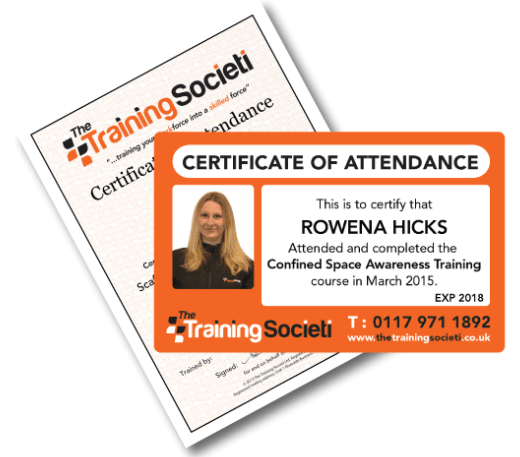Confined Space – Low Risk
A low risk confined space is a confined space where there is an easy unobstructed entry, no risk of flooding and adequate ventilation which is either natural or mechanical.
This course aims to give those who work in low risk confined spaces the general knowledge to do so safely and to know what to do should an emergency arise.
- Health & Safety Laws & Regulations – understanding your legal duty Confined Space
- Regulations 1997, Management of Health & Safety at Work Regulations 1999 & Health & Safety @ Work Act 1974
- Identification and controlling risks
- How to prepare to enter and work safely in low risk confined spaces
- Entering and exiting confined spaces safely
- The importance of using equipment and tools safely in accordance with manufacturers instructions
- Using Safety Harnesses correctly – pre use checks, how to wear and adjust correctly
- Gas monitoring and hazardous atmospheres
- Working safely and following procedures
- Emergencies, types associated with confined spaces and the procedures to deal with them
- Working with others as well as lone working
- Appropriate behaviour whilst working
- General knowledge required for working in low risk confined space environments
- How to identify low risk, medium risk and high risk scenarios
- How to put emergency arrangements in place
- Gas monitoring
- Awareness of tripod / winch, harness and lifeline
- Rescue planning
- Test paper/questions/ handouts & review
Course Dates
Who Needs Confined Space – Low Risk
This course is for all those who work in low risk confined spaces (NC1). Examples of low risk confined spaces include valve chambers, PRV chambers, stairwells, booster pumping stations and meter pits.
Trainer

Robert England
Robert is our Senior Confined Space Trainer and he is our chosen expert in the subject, not only for his specialist subject but also for his great sense of humour.
Having spent 30 years of his career working for the Mines Rescue Service as well as the Fire Service, Robert has all the necessary qualifications and experience to train your team. Because he has walked the walk, he can talk the talk and his real life stories from site will help your delegates to relate to the course, and take the serious messages away with them, making it easier for you to implement a sound health & safety culture in your business.

